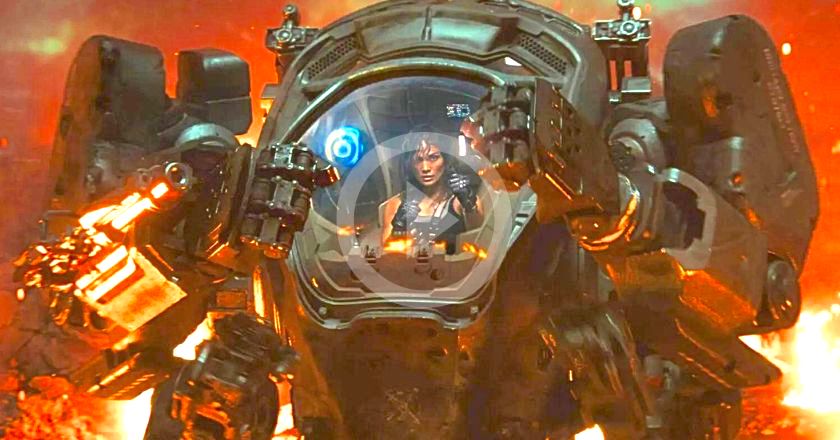Screening at the 2015 Audi Festival of German Films. For festival tickets and session details visit the official website HERE.

We are Young. We are Strong examines the racial tensions in Germany following the fall of the Berlin wall and the real-life attempted murder of Vietnamese immigrants during the Rostock 1992 riots. Not for the easily distracted, it’s a slow-moving, quietly intimate portrait of the people caught up in the conflict.
The film follows three main perspectives on the final day of the riots: the apathetic Stefan (Jonas Nay), who is trying to come to terms with the suicide of a close friend; his indecisive father Martin (Devid Striesow), who is pulled between furthering his career and his sense of duty; and the Vietnamese woman Lien (Trang Le Hong), who dreams of earning the right to remain in Germany. As the day passes, tension winds ever tighter as public frustrations brew and the three main characters are pulled into an inevitably violent outcome.
The film is influenced by director Burhan Qurbani’s experiences as the son of Afghan immigrant, and it shows in his non-judgemental approach. No solution is offered, no one is glorified or vilified. Qurbani’s interest appears to solely be on why this event occurred in the first place. He thoroughly and carefully illustrates the characters’ lives, showing what they endure and how they come to the decisions they do. To his credit, each perspective is utterly immersive. While the audience is in Stefan’s headspace, his numbness and detachment fill up his world to the exclusion of all else. Everything he does seems reasonable and natural, even inevitable. Then the focus switches to Lien or Martin, and their world becomes similarly all-encompassing.
The cinematography is appropriately bleak, the black-and-white picture capturing the futility and apathy of poverty stricken 1992 East Germany. Televisions are used to bring a sense of disconnect and unreality to events; Martin gamely gives the press assurances he doesn’t believe, Stefan’s friends watch the final footage of their friend while a gun rests unremarked on top of the screen. As one of Stefan’s friends remarks despairingly, without work or purpose, he can’t remember the past and he can’t imagine a future. There is only a stark, unrelenting present interrupted by spates of violence.

It’s not until the three quarter mark, during Stefan’s interview with a reporter at the riot, that colours appear and it becomes difficult to tell what the film is trying to do. Does it imply that this is the first honest look at Stefan and his friends under the posturing? Suggest that violence creates a sense of clarity? Or just to amp up tension for the rather anti-climactic finale? The third-act injection of colour highlights nothing in particular, instead coming off feeling pointlessly artistic.
Unfortunately, despite the slow-building tension through the film, it doesn’t come to any sort of head. The audience spends two hours watching the characters journey toward each other with the slow-acting devastation of planetary bodies on a collision course– only for them to miss. The only character whose story reaches any sort of measurable resolution is Lien, whose conflict with one of her co-workers comes to a surprising conclusion and renders a sense of grace to what is otherwise a mess of chaos and violence.
To be fair, as the film is based on real-life events, Qurbani is constrained in what he can and can’t do. And while anti-climactic, We are Young. We are Strong does succeed in painting a compelling portrait of the event and the people involved. With the recent global financial crisis, it’s important that films like these be made, if only to help avoid the past repeating itself. Though not recommended for the average filmgoer, it’s an important insight into something that has happened before and might yet happen again.
THE REEL SCORE: 5/10
– V.J.







